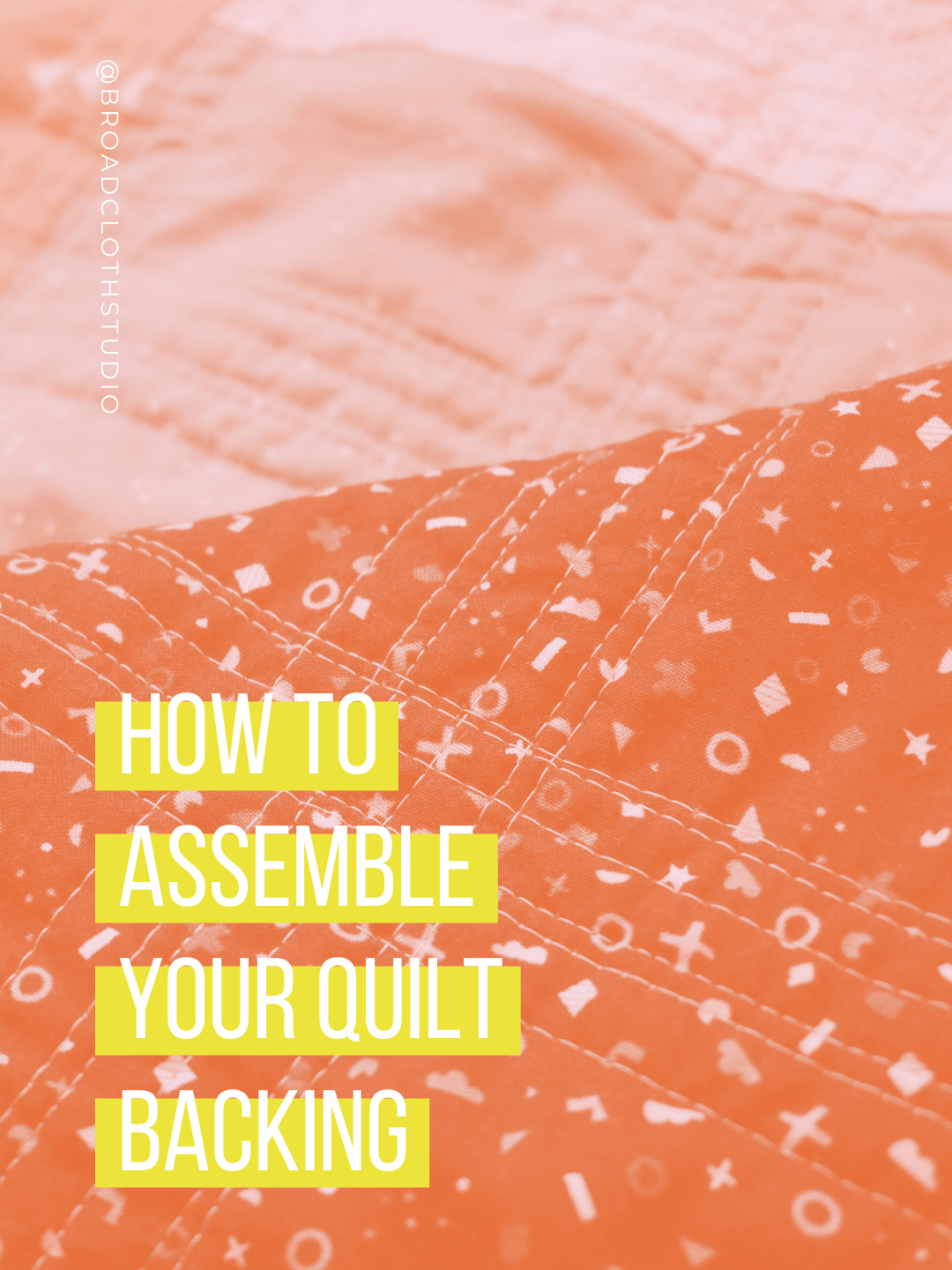How To Mark Your Quilting Pattern
There are so many different ways to quilt a quilt. When I’m machine quilting, I’ll typically do one pattern all over the quilt, edge-to-edge (like a cross-hatch grid or zig-zag lines). When I’m hand quilting, it really depends on the pattern and what I feel like, but often times I’ll work with more organic curves, or change up the pattern block-by-block. But, regardless of the quilting motif I decide on, my process for marking the lines is pretty standard!
The only big difference between machine and hand quilting is that I will sometimes use painter’s tape as a guide when machine quilting, but never while hand quilting. Why’s that? Because it takes me forever to hand quilt and I don’t trust the painter’s tape to stay stuck all that time and it’d just get caught on my hoop as I move it around the quilt. Plus, if it did stick for the length of time it takes me to hand-quilt, I’d honestly be a little worry about sticky residue on the quilt top. All that being said, I have used 1/4-inch masking tape while hand quilting, I just never leave it on the quilt top beyond a quilting session.
Materials
Basted quilt sandwich
Marking tool:
Hera marker (the dull edge of a butter knife will work well too)
Painter’s tape
Sliver of soap – if you use a classic white soap (like the kinds hotels give out), you can get a nice faint line from it that will wash out when you’re all done and you wash the quilt top for the first time
Quilting pencils – make sure to test before you use on the fabric you’re marking. You want to make sure this mark doesn’t stick around!!
Rulers
Other tools
Stitch guides: some machines have a stitch guide that you can use as a guide for lines further away than the edge of your foot. These make it incredibly easy to make repeating parallel line patterns as you don’t have to mark EVERY line, just maybe every other, or every couple, and you can sew the in-between lines using the stitch guide. If you only mark one line, make sure to check in that you aren’t veering off the path of parallel – it’s easy to start getting a little wobbly when using the stitch guide (especially if you’re out of practice!), so make sure you have enough marked lines to give you the confidence to sew parallel lines!
Quilting Stencils: totally optional, but I love having mine around to help see what a final pattern will look like, even if I don’t end up using the stencil to mark it!
How To
Set up your quilt sandwich so it is flat on top of a hard surface. I like to stand up and mark with the quilt sandwich on a table, moving the quilt as necessary to cover the entire quilt top, but do what is comfortable for you!
Depending on the quilt top pattern, sometimes you’ll have natural guides to base your quilting lines off of, say if you’re doing a simple crosshatch square grid and have row or column seams for you to use as reference points. If I don’t, let’s say if I am quilting a diamond grid, I will start by marking my two center lines from corner to corner with my painter’s tape or hera marker.
If you’re using painter’s tape, I would tape one set of parallel lines first, then quilt them all, before laying down the other set of lines. This will make it easier to sew as you won’t have to lift up your tape every time you come to an “intersection”. You do not want to sew through your painter’s tape!
How do you get a straight line without a point of reference? I use any and all rulers I have on hand and set them end to end, or I use a measuring tape for this first marking (it helps if you have a friend to keep it from moving around, or small piece of painter’s tape every so often!)
Once you’ve got these center lines for reference, I use my largest ruler to mark my parallel lines from it, moving the ruler along the reference line as needed.
If you’re using painter’s tape, make sure to keep track of which edge is the “marking”. Sometimes I’ll have a sharpie on hand and will mark a little arrow at the beginning of the tape which way is the “line” (just make sure not to mark your quilt top!). Another painter’s tape option is instead of using one edge of the painter’s tape as a guide, is to use both edges of painter’s tape as a great way to create a quilt plaid-like pattern!
Continue to mark until you’ve covered the whole quilt top!
One final thing to note: if I am pin basting, sometimes I will mark a couple quilting lines and then baste that section, before marking a few more lines before basting that section. This allows me to avoid marking lines on top of the pins as it’s hard to balance the ruler on top of the pins.









